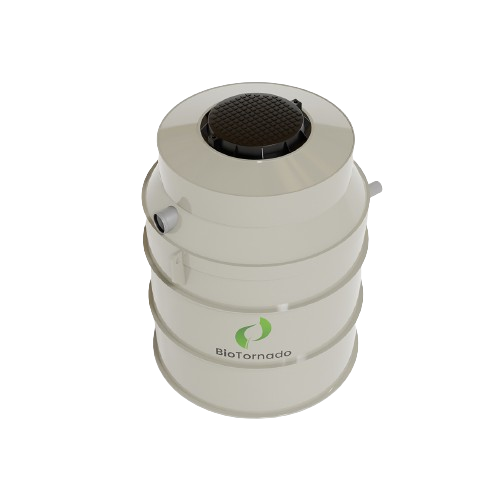Looking to install the domestic wastewater at home and tried exploring the incomplete suggestions from non-experts. You come to the right blog to understand how to make the right decision & to come up with the right domestic wastewater treatment with the help of a BioTornado expert.
The selection of domestic wastewater treatment plants is very subjective to individuals but there are some common grounds which should be considered for the exceptional hassle-free performance of domestic wastewater plants.
The following points should be kept on the table before deciding on any type of domestic wastewater treatment plant for your home:
1. Number of people at home
The number of people determines the capacity of domestic wastewater required for your home. Similarly, if you are installing a domestic wastewater treatment plant for Commercial use the number of employees and visitors will be the deciding factor for the capacity size required for the facility.
let’s explain this concept of the number of people and Capacity size requirement with a simple example let suppose the house has three rooms with 5 people living in it and on average the per-person consumption of water is 150 liters per day the total wastewater generated will be
= 5-person x 150 liters/person/day
=750 liter /day
The wastewater generated in a month considering the visitors and drainage wastewater from rain.
=750 liter /day x 30
=22,500 liters per month
Considering the rainwater from drainage and visitors visiting the house the total wastewater generated in the month is 23,000 liters which is 6075 gallons.
The individual should keep track of their per capita wastewater generated from the respected EPA department for accurate measurements. Purchasing domestic wastewater without considering the number of people and peak flow rate will waste your money and efforts due to insufficient treatment of the plant.
2. Soil Type
Whenever you decide to install the wastewater plant, you should get an analysis of the soil where the plant is being installed. Detailed evaluation of the proposed site for a domestic wastewater plant is essential for the durability and proper maintenance of wastewater. Get your soil analysis and compare the soil suitability to the plant you want to install at your home. If the soil type of plant is matched with your soil type this is a green tick for you to install the wastewater treatment plant at home.
3. Hydraulic Loading Variation
The flow of domestic wastewater into microbial compartments can vary in terms of movements inside the domestic plant. The two-flow pattern represents the regime of extreme and ideal conditions and both have their importance depending upon the nature of the wastewater treatment plant.
a. Complete mixing
The influent to this ideal reactor is completely and instantaneously mixed with the reactor contents, which are, as a result of the intense mixing, uniform in composition throughout.
b. plug flow
The contents of this ideal reactor flow through the reactor in an orderly fashion characterized by the complete absence of longitudinal mixing. The concept of plug flow may be readily grasped by imagining the wastewater, on arrival at the reactor, to be placed in watertight ‘packets’ which then travel along the length of the reactor – as if on a conveyor belt – with no transfer of material from one packet to another, but with complete mixing within each packet.
If you are looking forward to hassle-free and efficient domestic treatment you should ask the inspector who is installing the wastewater at your home. The hydraulic loading variation will determine the pollution factor entering the domestic wastewater plant at a specific time. The complete mixing will usually have a uniform Pollution load throughout the process and less interruption of operations, whereas the plug hydraulic loading and vice versa.
4. Electric vs Non-Electric
One Should keep in mind that it’s not always about the upfront cost. Once the system is installed there will always be maintenance costs. Remember the rule of thumb that the fewer the moveable parts in domestic wastewater less the operational and maintenance cost.
But because with more innovative technology like BioTornado there always will be consumption of electricity so to pick and choose one should compare the energy consumption of each domestic wastewater in the same categories, not with septic tanks, which are the old technology.
5. General Requirements (noise, smell & space)
The most important part of domestic wastewater after installation is its working capabilities and outcomes. There are a lot of options for customers to find domestic wastewater that works quietly, has no smells during the operations and has very intelligent engineering designs. You can also opt for options which are 100 % made from recycled plastic such as the BioTornado products range.
BioTornado has a larger range of products which cater for all types of variation and can provide designs on an individual design basis to provide unique wastewater solutions to all of its customers believing that one solution does not fit all.
6. Regulatory requirements
Each country has their specific regulatory requirement for the effluent. While buying for regulatory purposes one should ask for the expected effluent parameters from the company before installation to make sure your house treated effluent within the range as per regulations.
Conclusions
Make a list of your requirements, check the website of each domestic wastewater company’s solutions and contact the technical person for more details, your one-day hard work in researching the best solution for your home will make you satisfied for decades from the wastewater treatment plant.



